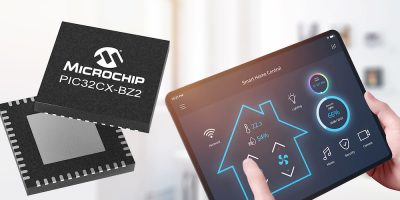The STM32WB5MMGH6 wireless module by STMicroelectronics provides a subsystem for wireless communications for industrial applications using Bluetooth Low Energy, Zigbee and Thread standard and comes with free-to-use protocol stacks. Alternatively, developers can use other proprietary protocols.
At the heart of the module is STMicroelectronics’ STM32WB55 MCU which has an Arm Cortex-M4 core for application-level processing and a Cortex-M0+ dedicated to managing the integrated radio, which safeguards real-time performance in both domains, explained ST.
The MCU’s on-chip RAM is advantageous when running the Thread protocol, added the company.
The module can be used in wireless communication and control of devices such as remote sensors, smart door locks, PC accessories including printers, and infrastructure equipment like network gateways and smart building controllers.
The module integrates the antenna and its matching circuitry, together with all the required passives and timing crystals. Pre-certifications for EMC, Bluetooth LE 5.3, Zigbee 3.0 and OpenThread simplify the mandatory testing and product-level approval processes for users, claimed ST, which saves development costs and accelerates time to market.
The STM32WB5MMGH6 module can be integrated into continuous monitoring systems to enhance the maintenance of industrial equipment and avoid unexpected failures and downtime. It has been used by prescriptive and predictive maintenance company, I-care, with its Wi-care sensors in a wireless and continuous asset monitoring system. When combined with I-see, the company’s cloud-based and AI-driven analytical platform, it provides a complete maintenance industry 4.0 solution, allowing users to visualise equipment status and plan maintenance schedules, said I-care.
“Choosing a wireless module instead of engineering a chip-down solution is the fastest way for developers to complete their projects,” said Hakim Jaafar, general manager – BLE/802.15.4 MCU, STMicroelectronics.
The STM32WB5MMGH6 module is in production now and supported by ST’s 10-year product longevity commitment, which ensures long-term availability of parts for industrial applications.
Product designers working with the STM32WB5MMGH6 module can use the STM32 microcontroller development ecosystem that includes free tools, for example the STM32CubeMX configurator and software, such as the STM32CubeWB MCU package. This package provides essential embedded-development resources, including production-ready MISRA C and ISO/TS 16949-compliant hardware abstraction layer (HAL) and low-layer APIs, FatFS file system, FreeRTOS, communication-protocol stacks, and code examples.







